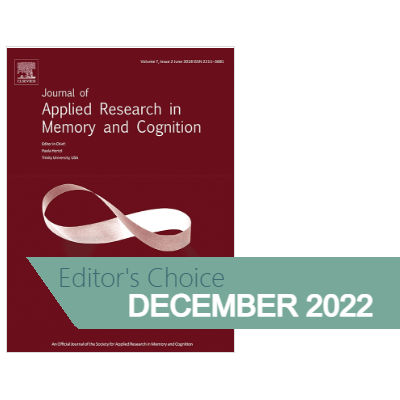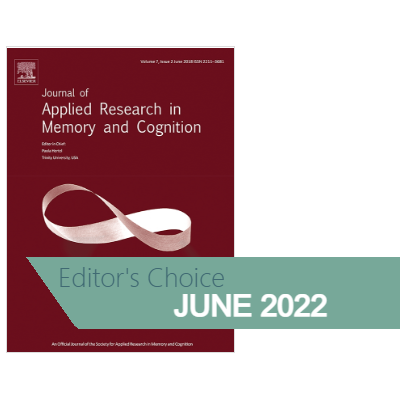JARMAC Editors Choice: September 2024
/Applying Cognitive Psychology to Improve Learning: Current Developments and Future Directions
Sean H. K. Kang
Developments in cognitive psychology have advanced our understanding of human learning and yielded practical implications for improving learning. The studies reported in this special section offer contributions to both theory and practice, especially in the area of learning strategies. Although translating a given research finding into educational practice is not straightforward, the articles in the special section provide suggestions for strategies that students and teachers should have in their repertoire.
Turn off, Tune Out? Testing the Effects of Webcam Use and on Learning in Synchronous Online Classrooms
Oscar D. Ramirez Perez, Annie S. Ditta, Julia S. Soares
Synchronous online classes have grown in popularity, sparking debate on student webcam use. In Experiment 1, participants were assigned to attend a lecture with half instructed to turn their webcam on and half instructed to turn their webcam off (interpolated testing was also examined as a buffer against webcam effects). A webcam effect was observed: webcam-on participants outperformed webcam-off participants. Experiment 2 manipulated class-wide webcam use by creating uniform groups in which participants all had webcams on or off at the same time and mixed groups in which webcam use was evenly split. The webcam effect replicated in the mixed condition, but the effect was attenuated in the uniform condition, suggesting that the webcam effect is larger in mixed webcam classes. Additional findings suggest that feelings of accountability and reduced media multitasking for webcam-on participants could contribute to the webcam effect more than social presence.
Interleaved Pretesting Enhances Category Learning and Classification Skills
Steven C. Pan, Ganeash Selvarajan, Chanda S. Murphy
Alternating between concepts during learning (interleaving) and making guesses about to-be-learned information before viewing the correct answers (pretesting) can enhance learning relative to focusing on one concept at a time (blocking) and studying, respectively. We investigated the potential benefits of interleaving and pretesting for acquiring categorical knowledge and classification skills. In three experiments, participants learned about psychopathological disorders from interleaved or blocked case studies and via pretesting or studying. A 5-min delayed test (Experiment 1) showed that interleaving and pretesting improved the ability to classify new and previously viewed case studies. Moreover, their combination had at least additive effects, yielding the best overall performance. Similar results occurred on a 48-hr delayed test (Experiment 2) and under conditions of equivalent time on task (Experiment 3). Overall, this study reveals that an effective scheduling approach paired with a beneficial learning activity forms a potent combination (interleaved pretesting) that is uniquely capable of enhancing learning.











